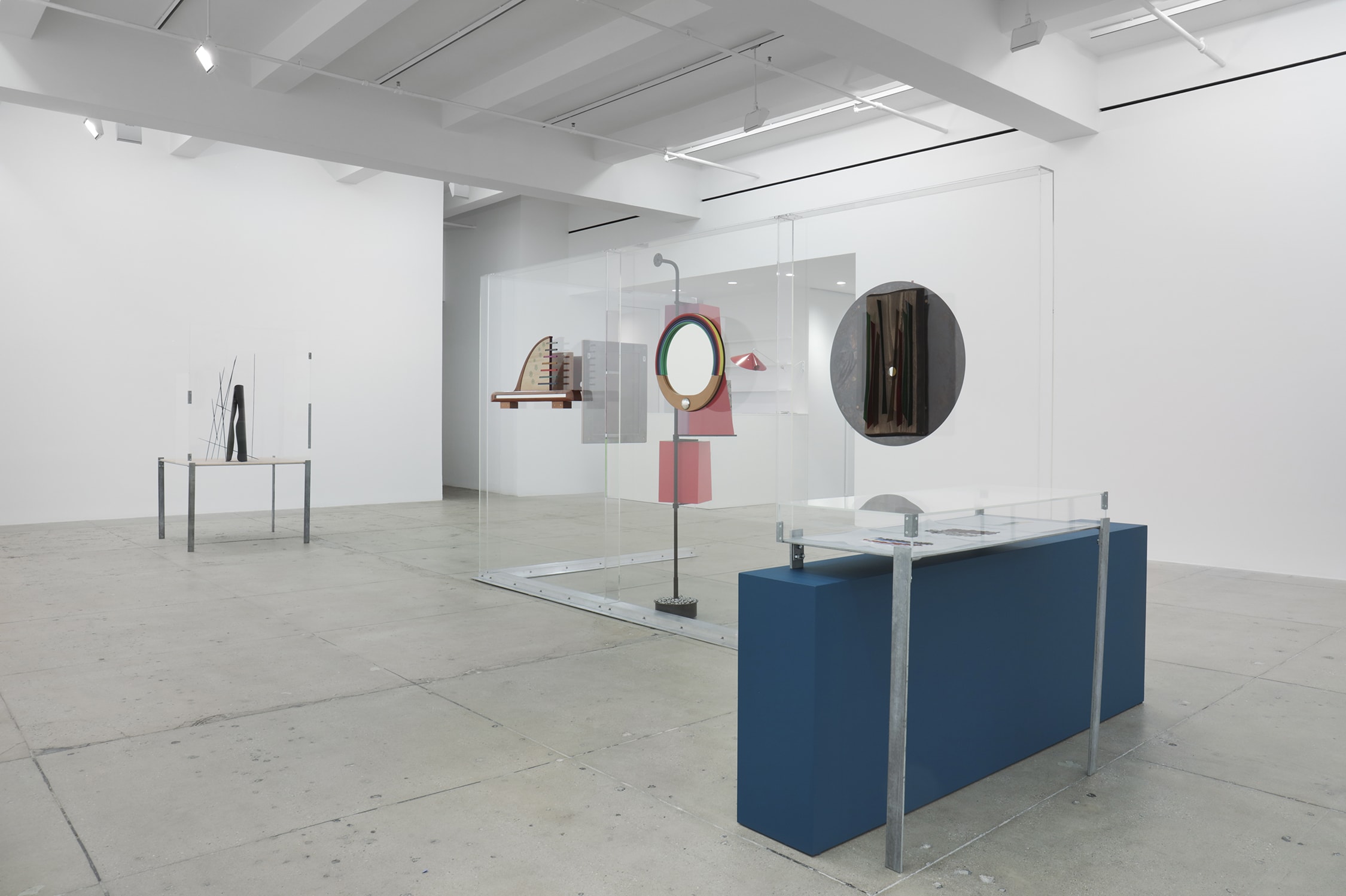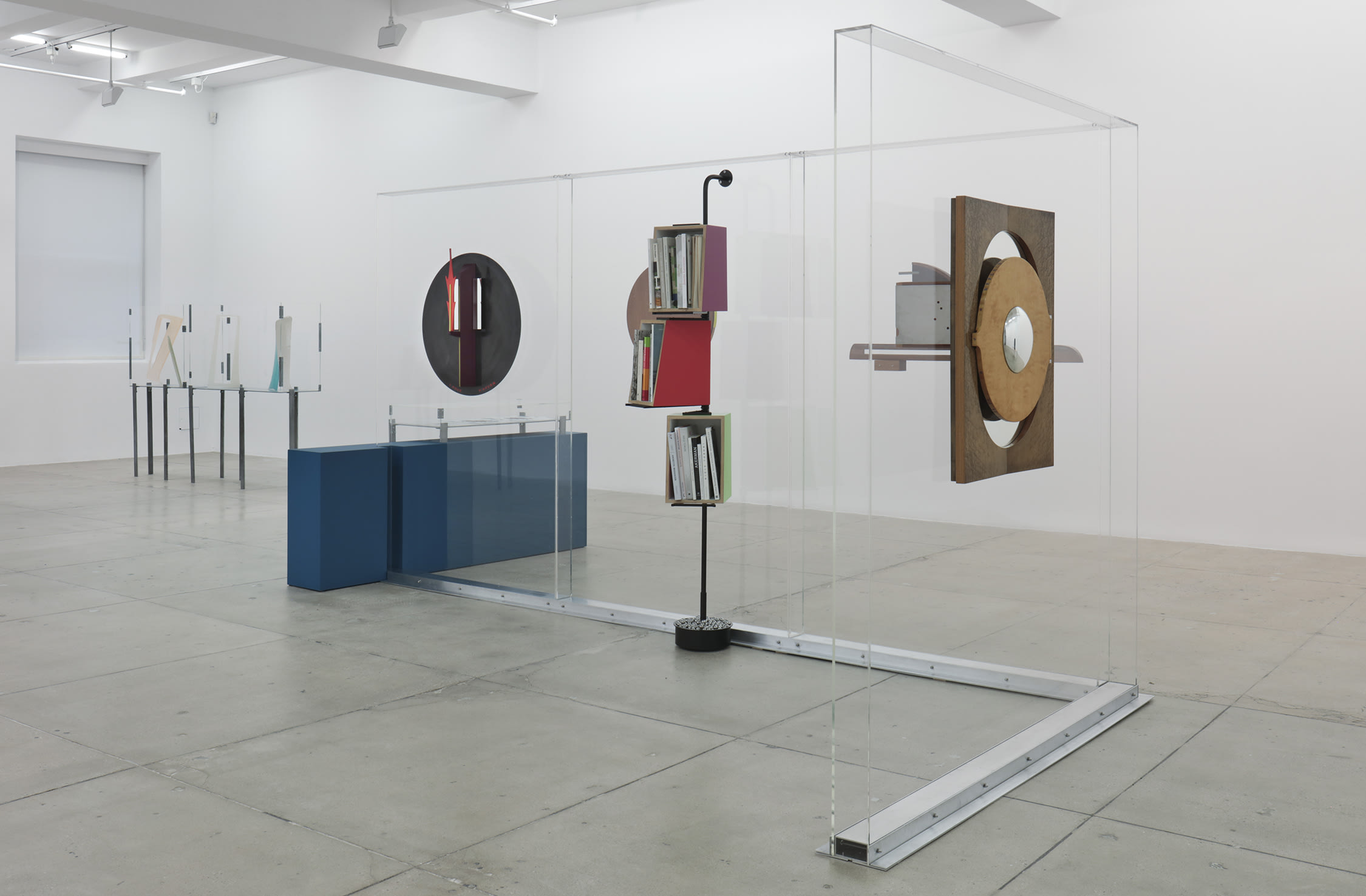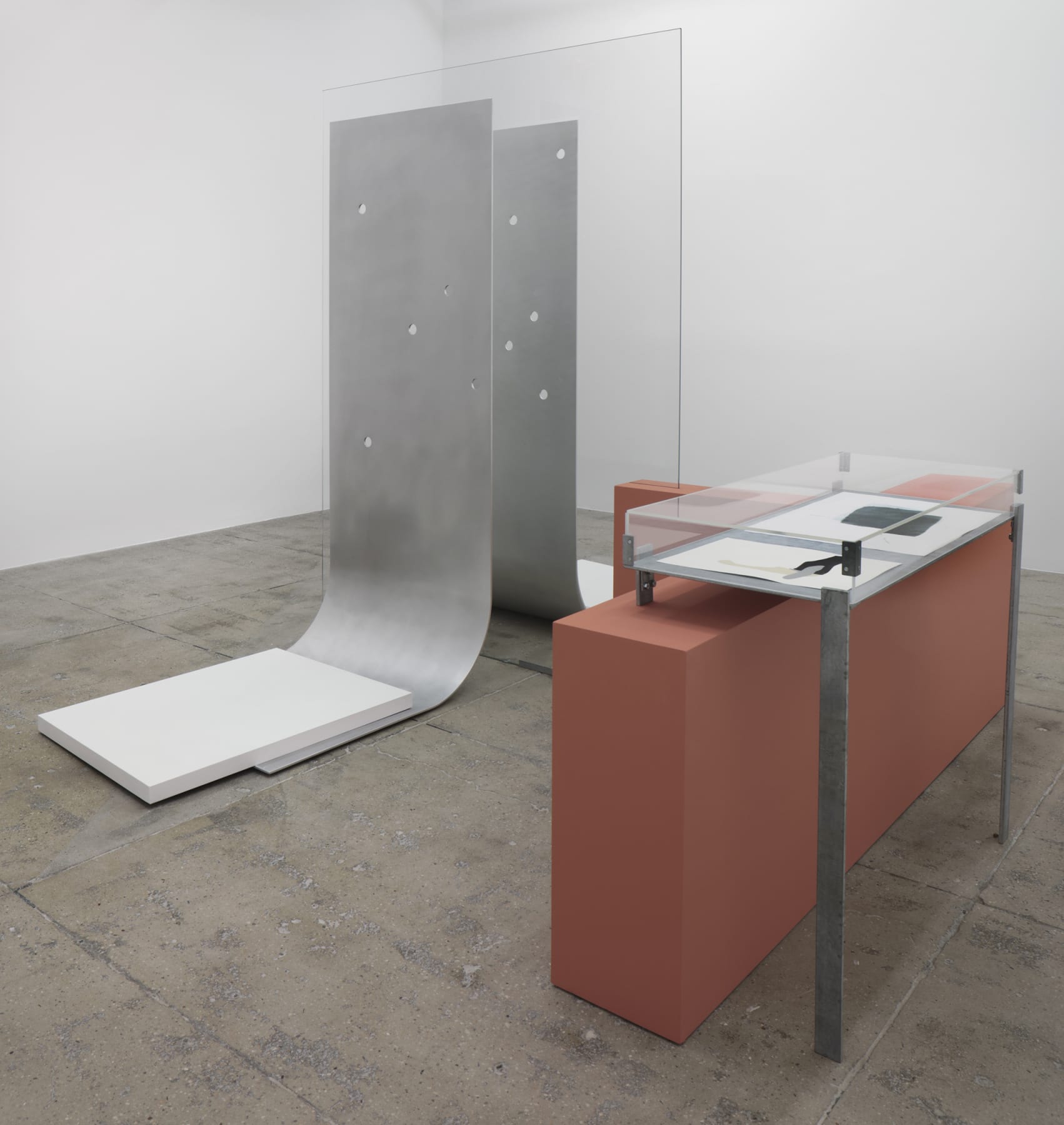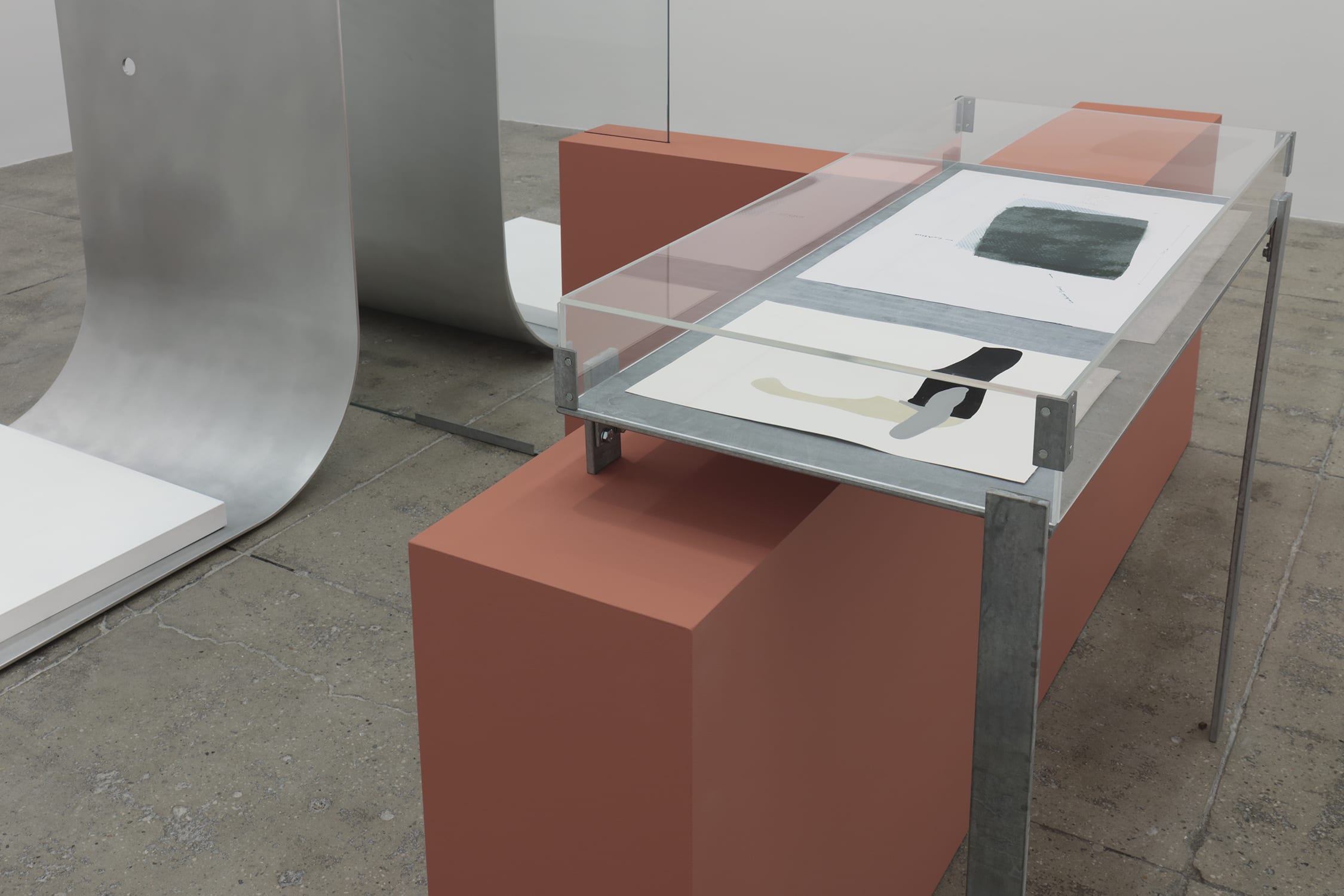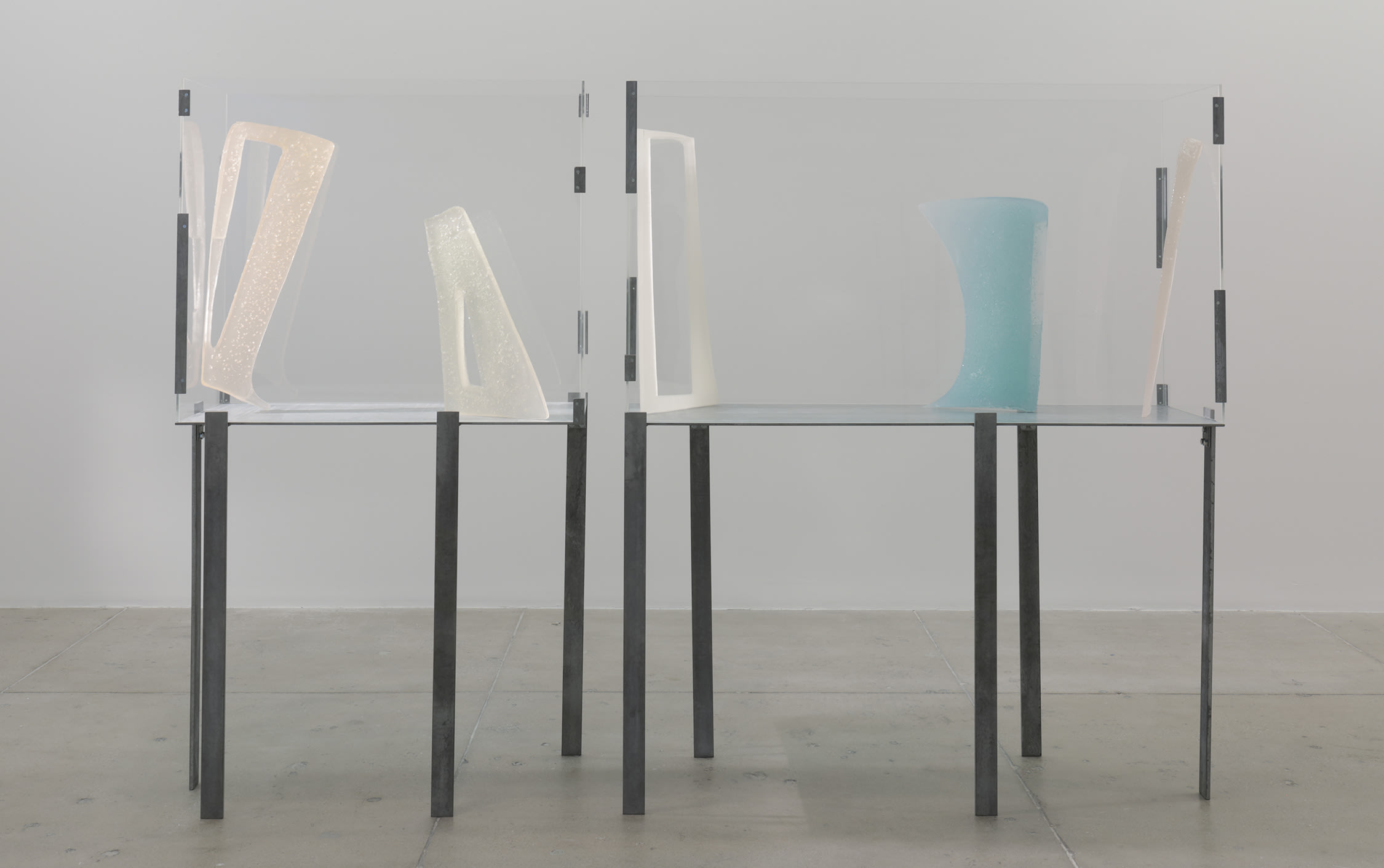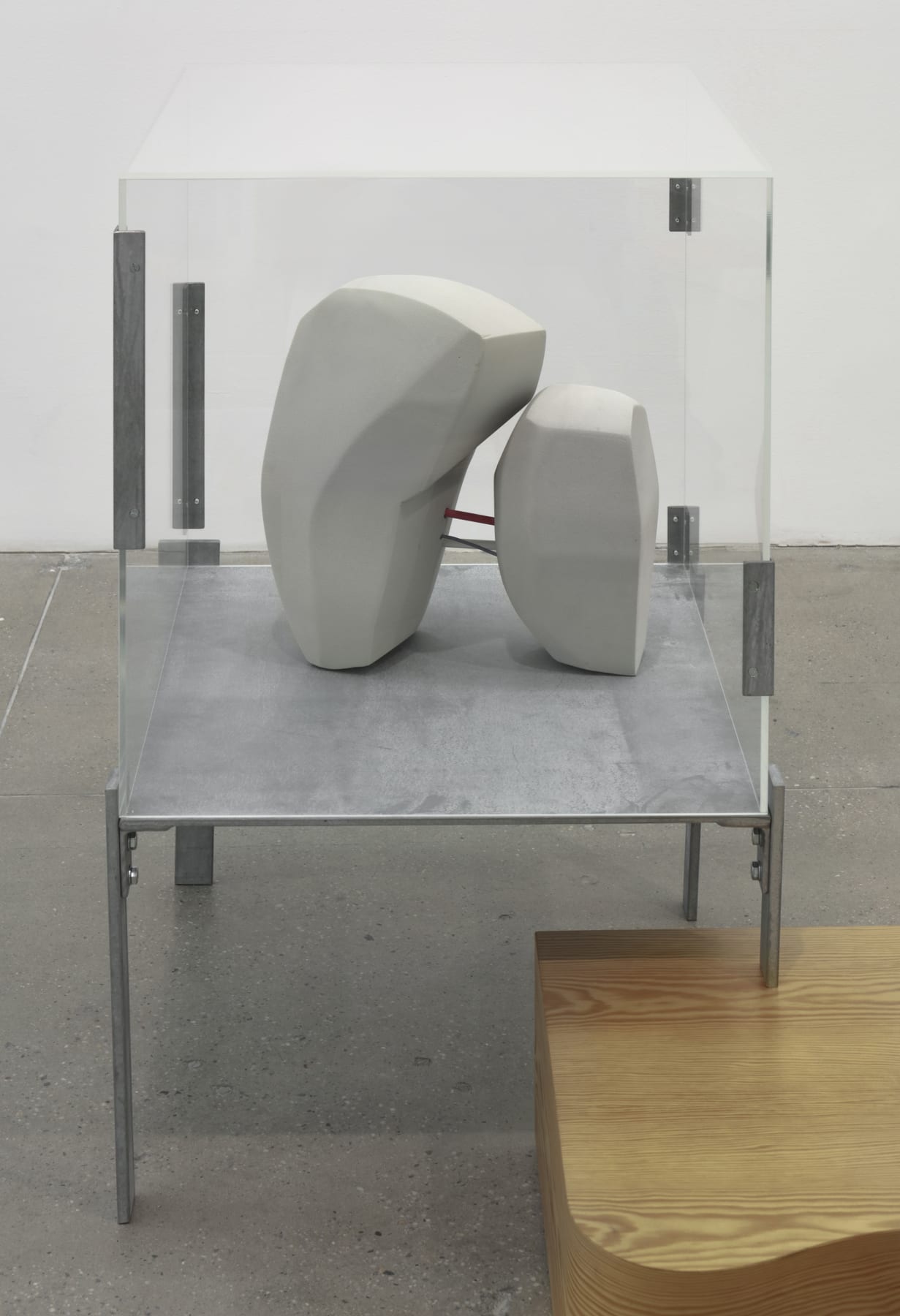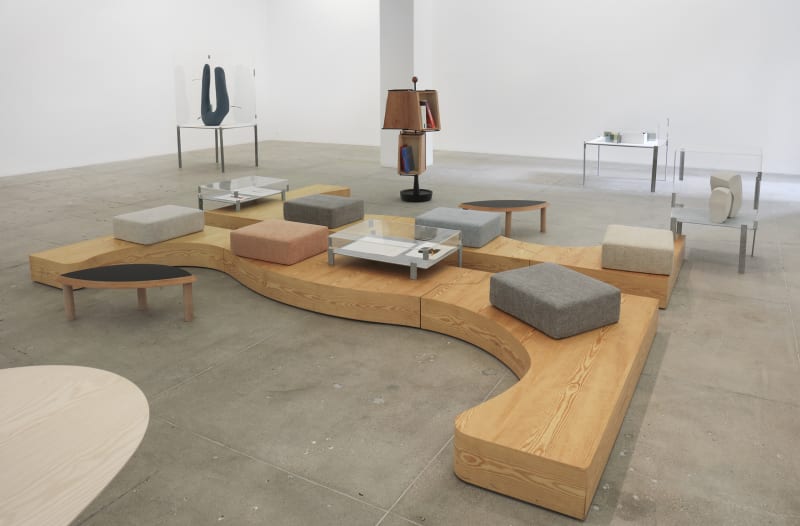Overview
Marian Goodman Gallery is delighted to announce Work Desk for an Ambassador’s Wife, an exhibition by Nairy Baghramian and Janette Laverrière, opening on Thursday 7 November at 6 - 8 pm and on view through Saturday, 20 December. The exhibition will present sketches, drawings and maquettes of Baghramian’s works from 1999 to the present that are not intended to be realized, as well as a major collaborative project with Janette Laverrière, and a new related sculpture. Nairy Baghramian’s sculpture and installations have made reference to the history of interior architecture as a means to interrogate ideological norms and reformulate and reposition object making. Embracing antecedents for whom the concept of the installation has played a central role in design and object-making provides a productive tension for the artist, a platform for innovation and new possibilities within sculpture. Baghramian’s reengagement with key maverick histories includes purposeful collaborations which activate the potential of objects and the thresholds they occupy, and brings to light the political, philosophical and institutional contingencies of these spaces. I am always concerned with contradictions and confrontations [in my collaborations] and the resulting debates in a shared space rather than with symbiosis or appropriation. -Nairy Baghramian, 2019
NAIRY BAGHRAMIAN & JANETTE LAVERRIÈRE
Work Desk for an Ambassador’s Wife
Opening reception: Thursday, 7 November 2019, 6 - 8 pm
I was thinking I am not going to do anything useful anymore, I do not want to, I cannot, so I will do useless things. All of a sudden a new world opened up for me. - Janette Laverrière (1909-2011)
Marian Goodman Gallery is delighted to announce Work Desk for an Ambassador’s Wife, an exhibition by Nairy Baghramian and Janette Laverrière, opening on Thursday 7 November and on view through Saturday, 20 December.
The exhibition will present sketches, drawings and maquettes of Baghramian’s works from 1999 to the present that are not intended to be realized, as well as a major collaborative project with Janette Laverrière, and a new related sculpture. Nairy Baghramian’s sculpture and installations have made reference to the history of interior architecture as a means to interrogate ideological norms and reformulate and reposition object making. Embracing antecedents for whom the concept of the installation has played a central role in design and object-making provides a productive tension for the artist, a platform for innovation and new possibilities within sculpture. Baghramian’s reengagement with key maverick histories includes purposeful collaborations which activate the potential of objects and the thresholds they occupy, and brings to light the political, philosophical and institutional contingencies of these spaces. I am always concerned with contradictions and confrontations [in my collaborations] and the resulting debates in a shared space rather than with symbiosis or appropriation. -Nairy Baghramian, 2019
The heart of the current exhibition finds its origin in a friendship and meaningful collaboration Baghramian began in the playful and poetic sphere of Janette Laverrière (1909- 2011). A pioneering Swiss/French designer who conceived of her own mind as an interior architectural space, Laverrière’s famous renunciation of useful objects resulted in the material transformation of figures, ideas and narratives over seventy years, often drawing from literature, politics, and history. Throughout her career Laverrière’s forms were driven by a sense of role-playing and world-making, full of narrative and innuendo, by turns playful and polemical, modern and anti-modern, in and out of time. – Robert Wiesenberger, in “Janette Laverrière: Evocations,” Question the Wall Itself, Walker Art Center, Minneapolis, 2016
The exhibition will feature maquettes, sketches and drawings of Baghramian’s unrealized sculptures which are brought together and shown for the first time, displayed in plexi and zinc- coated metal vitrines, which become like fragments themselves. Models for her working process and not intended for production, the objects are presented as a family of non-utilitarian objects titled Side Leaps, inspired by Laverrière’s own continuous personal history of unproduced objects and the prolific drawings made during her lifetime. Existing in this liminal space, they are works ‘which have not been allowed to become sculpture’ as Baghramian says, but here become visible and part of an overall environment in relation to Laverrière’s design objects, such as Chapeau Chinois II (1952/2012) and Bibliothèque Tournante (1950/2012).
Just as the titles in my works introduce another level of meaning, my models and drawings are also an extension of my thinking and de-coupled from the ultimate realization of a sculpture. They thus stand in for a restriction and self-limitation and could be understood as a phantom group that enables me to keep my distance from and escape from questions such as materiality, gravity and three-dimensionality. The idea thus remains justified to remain an idea without giving way to the pressure of realization. - Nairy Baghramian, 2019
Central to the exhibition is Baghramian and Laverrière’s first collaboration as “sisters in creation” for La Lampe dans l’horloge, a project made for the Berlin Bienniale 5, 2008, which is recreated in the North Gallery. Originally shown in the Schinkel Pavilion, The Lamp in the Grandfather Clock is titled after an André Breton novel and Laverrière’s first Parisian design gallery. Baghramian worked in unison with the then 97-year old Laverrière to create an architectural structure conceived here as a freestanding plexiglas wall enclosure. Recalling Laverrière’s Paris apartment, the piece re-contextualizes some of the designer’s objects—including a bookshelf, and a group of mirror sculptures from the series Evocations, which began in 1936. Marked by inscriptions from figures as luminous as Émile Zola, Jean Cocteau, Victor Hugo, Rudyard Kipling, Louise Michel, and Martin Luther King, the objects are installed like portholes inviting inquiry, playful and secretive objects [which] reveal a very personal repertoire of homages, recollections and ideology. Laverrière’s last completed mirror, titled Freedom was designed in 2010 at age 100 as a tribute to Martin Luther King and Barack Obama who, at the time, represented the turning of a tide.
In the Gallery’s North Viewing Room Baghramian presents another work key to the principle of collaboration, La Colonne Cassée 1871, The Broken Column 1871, (2008). Two vertical L-shaped steel sculptures sandwich a freestanding glass wall, the pre-version of the Mies glass wall seen in Baghramian’s iteration at Neue Nationalgalerie, 2008. The polished aluminum slabs, secured by counterweights, resist the will to collapse onto the glass between them. Punctuated by holes they represent the barricade of the Paris Commune of 1871, an event instigated by Gustave Courbet, in which the Place Vendome column was broken and removed. The work is an indirect homage to Laverrière’s mirror-object La commune (hommage à Louise Michel), 2001, a tribute to the proto 19th century feminist and anarchist. Shaped like a cherry, in reference to the song Cherry Blossom Time (1866) which was adopted by the Commune, it is an example of Laverrière’s commitment to making work in the spirit of the French Revolution.
In the South Gallery, the large installation Untitled (Seating and table platform), 2009, comprised of two facing wooden platform areas with cushions, is based on democratic design principles for seating from the 1970s. The open-ended piece, which holds the promise of social interaction devoid of hierarchy and tiers, exists in tandem with Egg Table and Black Eye Table and in conjunction with Baghramian’s maquettes. On the adjacent walls her drawings are interspersed within the space, in dialogue with the sculpture.
Concurrent with the opening of the exhibition and inspired by another major collaborative work of Baghramian & Laverrière, Performa 19 will debut Entre Deux Actes (Ménage à Quatre) a performance work of Baghramian in association with the artist and choreographer Maria Hassabi from 6 – 10 November (curated by Charles Aubin). Staged over two stories of a townhouse at 1014 Fifth Avenue, the collaboration is inspired by a seminal 1947 design of Janette Laverrière and its re-interpretation by Baghramian--who reconfigures Laverrière’s imaginary dressing room for an actress, re-framing objects within the chamber and adding erotic polaroids of Carlo Mollino, a third protagonist who ‘liberates’ the absent female character. The Performa collaboration of Baghramian/Hassabi/Laverrière/Mollino is an ephemeral event and represents a ‘fourth staging’ of this work, highlighting Baghramian’s longstanding interest in set design, theater, performance, and gender politics, which predates her engagement in the fine arts. A nuanced work of movement, dance, stillness, and the body in relation to objects and architecture, the piece is commissioned by Performa and 1014, and co-produced with The Kitchen.
My interest in dance, performance and theater goes back to the late 80s and early 90s in Berlin. After my escape from Iran in 1984, the dance and theater scene, and thus primarily the American dance theater and the suspenseful drama scene of the German speaking theatre tradition in East and West Berlin, contributed significantly to my socialization. Before I started to work on the idea of sculpture and focus on visual arts, the foundations of my current questions, such as representation in space, socio-political contexts, temporality or gender studies in this milieu were laid out and are still a decisive aspect of my practice today. - Nairy Baghramian, 2019
Nairy Baghramian was born in Isfahan, Iran in 1971, and has lived and worked in Berlin since 1984. Her work has been the subject of monographic exhibitions in an array of institutions, including MUDAM, Luxembourg (2019); Festival d’Automne à École des Beaux-Arts (2018); Museo Reina Sofia, Madrid (2018); SMK, Copenhagen (2017); Walker Art Center, Minneapolis (2016); S.M.A.K., Ghent (2016); Museo Tamayo, Mexico City (2015); Museo Serralves, Porto (2014), The Art Institute of Chicago (2014); MIT Visual Arts Center, Cambridge, MA (2013); Kunsthalle Mannheim, Germany (2012); The Contemporary Art Center, Vancouver (2012); the Serpentine Gallery, London (2010), and Kunsthalle Basel (2006).
Baghramian has been the recipient of the Zurich Art Prize (2016); the Arnold-Bode Prize, Kassel (2014); the Hector Prize, Kunsthalle Mannheim (2012); and the Ernst Schering Foundation Award (2007). She has also participated in the Venice Biennale (2019 and 2011); Yorkshire Sculpture International (2019); Documenta 14 in Kassel and Athens (2017), Skulptur Project Muenster (2017 and 2007); Lyon Biennale (2017); Glasgow International Festival of Visual Art, Scotland (2012); and the Berlin Biennale, Germany (2014 and 2008).
Upcoming solo exhibitions of Nairy Baghramian include Carré d’Art, Nîmes, France, April 2020; Galeria d’arte Moderna, Milan, IT, May 2020; and Monash University Museum of Art, Melbourne, October 2020.
Recently, Laverrière’s work has been featured by numerous institutions, including The Walker Art Center, Minneapolis (2016); Duddell’s, Hong Kong (2014-15); ar/ge Kunst Galerie Museum, Bolzano (2014); Silberkuppe, Berlin (2011 and 2014); Bergen Kunsthal (2010); Musee d’art contemporain de Montreal (2010); Museum für Gegenwartskunst, Basel (2009); Hayward Gallery, London (2009); the new Staatliche Kunsthalle Baden-Baden (2009); and the Schinkel Pavilion, Berlin (2008).
An upcoming collaborative project with Nairy Baghramian will be presented at CCA Wattis Institute for Contemporary Arts, San Francisco in fall 2020.
Baghramian’s participation in Performa 19, the eighth edition of the Biennial in New York, will include a commissioned piece, Entre Deux Actes (Ménage à Quatre) with artist and choreographer Maria Hassabi, which will take place from 6 – 8 November at 7 pm and from 9 – 10 November at 5 pm.
Please join us at the opening reception for the artist on Thursday, 7 November from 6 - 8 pm.
For further information, please visit our website at mariangoodman.com or please contact the Gallery at 212-977-7160.
